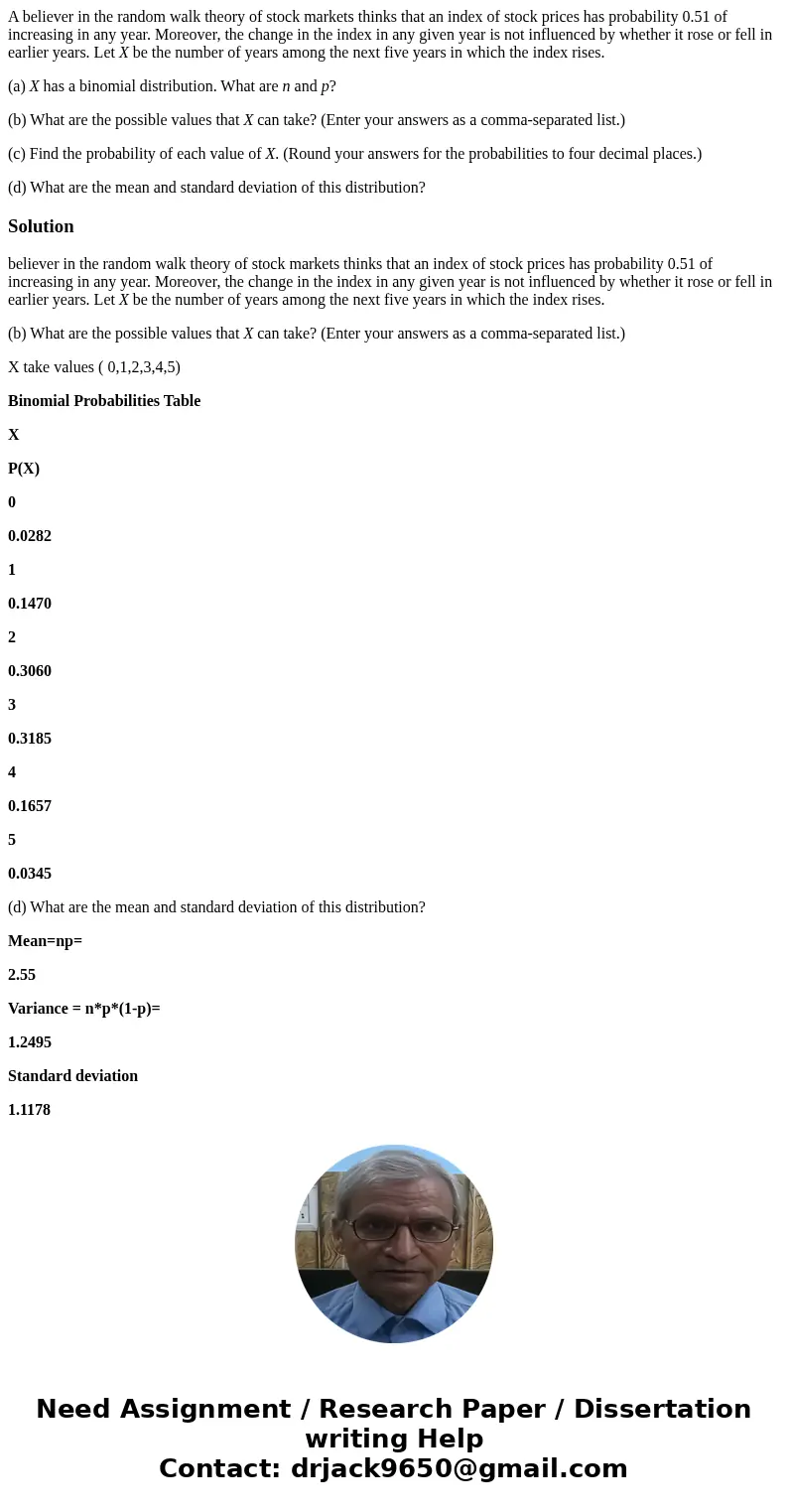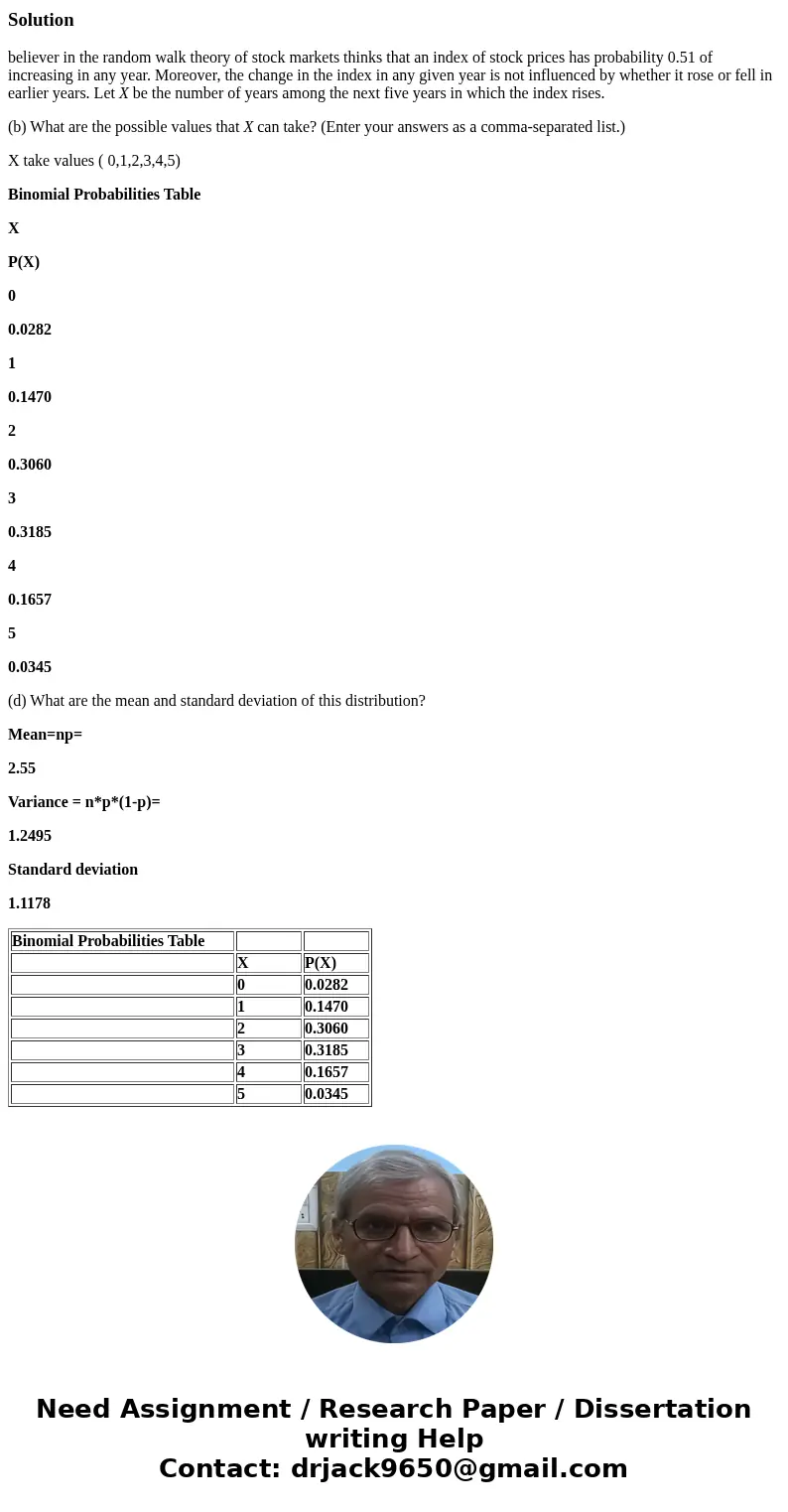A believer in the random walk theory of stock markets thinks
A believer in the random walk theory of stock markets thinks that an index of stock prices has probability 0.51 of increasing in any year. Moreover, the change in the index in any given year is not influenced by whether it rose or fell in earlier years. Let X be the number of years among the next five years in which the index rises.
(a) X has a binomial distribution. What are n and p?
(b) What are the possible values that X can take? (Enter your answers as a comma-separated list.)
(c) Find the probability of each value of X. (Round your answers for the probabilities to four decimal places.)
(d) What are the mean and standard deviation of this distribution?
Solution
believer in the random walk theory of stock markets thinks that an index of stock prices has probability 0.51 of increasing in any year. Moreover, the change in the index in any given year is not influenced by whether it rose or fell in earlier years. Let X be the number of years among the next five years in which the index rises.
(b) What are the possible values that X can take? (Enter your answers as a comma-separated list.)
X take values ( 0,1,2,3,4,5)
Binomial Probabilities Table
X
P(X)
0
0.0282
1
0.1470
2
0.3060
3
0.3185
4
0.1657
5
0.0345
(d) What are the mean and standard deviation of this distribution?
Mean=np=
2.55
Variance = n*p*(1-p)=
1.2495
Standard deviation
1.1178
| Binomial Probabilities Table | ||
| X | P(X) | |
| 0 | 0.0282 | |
| 1 | 0.1470 | |
| 2 | 0.3060 | |
| 3 | 0.3185 | |
| 4 | 0.1657 | |
| 5 | 0.0345 |


 Homework Sourse
Homework Sourse